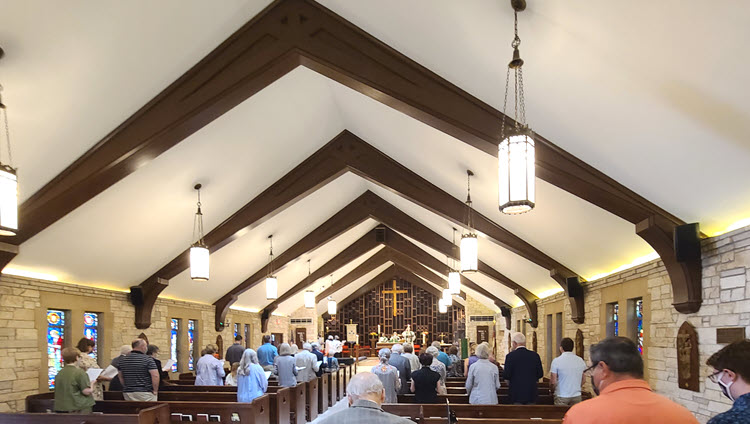
COVID-19 has forever changed the church. While exactly what the “next normal” of worship will look like will vary regionally and, within regions, between congregations, it will not return to how it was before the pandemic. With this in mind, I included worship changes as one of five changes I expect in the life of the church in the months and years ahead (for more on that check out Giving Up the Church I Always Knew).
Returning to Indoor Worship
After more than a year of worshipping exclusively online, I attended my first in person worship service in March 2021. Later that month I participated in my first indoor service. Finally, I started visiting area mainline congregations to better understand the safety and wellbeing protocols emerging as best practices in my area.
I’ve written quite a bit about those experiences, including:
- First In Person Worship Experience in a Year (March 2021)
- First Indoor Worship Service in a Year (March 2021)
- Pandemic Regathering: 8 Experiences (April 2021)
- Reopening for Worship: 5 Congregations (April 2021)
Toward a “Next Normal” Communion Experience
During the months of March, April, and May every communion experience included a localized variation of a self-serve do-it-yourself communion kit. These ranged from a simple ziplock bag containing commercially pre-packaged elements to a brown bag containing locally prepared elements. And, the actual containers varied widely in just how easy they were to open. Despite this variety the overall approach was similar:
- Worshippers remained masked throughout the worship service, but were asked to briefly remove or lower their face covering to partake of the bread and juice
- Communion was celebrated with social distancing in place and with clergy and other leaders remaining on the chancel, altar, or platform
- After consuming the elements, worshippers placed any empty containers in the ziplock or brown paper bag, and disposed of it after the service when exiting the sanctuary
Today was different. At Trinity Episcopal Church (Fort Worth, Texas), worshippers were invited to come forward to receive the bread directly from a priest. A priest handed a wafer to each worshipper, and the worshipper then temporarily removed or lowered their mask to partake while returning to their pew. Notably, this modified approach incorporated only one element.
So What?
Most churches have now reopened for in person worship in the United States. And, many have adopted phased approaches to how in person worship works, incorporating best practices from their denomination, the CDC, and other leading agencies.
I appreciate the amount of time congregations continue to invest in this work, and encourage leaders to prioritize the sacraments in their ongoing and incremental approaches moving toward a “next normal.”
My story is mine alone. For me, however, the reintroduction of the in person experience of Holy Communion, Eucharist, or Lord’s Supper has been unexpectedly powerful and particularly meaningful. Within this, two memories are especially significant:
- First time to participate with a self-serve do-it-yourself communion kit
- First time to receive communion directly from a pastor, priest, or minister
As I reflect on my own experiences, I also want to offer a few words of thanks to the leaders who made them possible. For my first pandemic experience, I offer thanks to the Rev. Dr. Fritz Ritsch, the Session, and all who worked on reopening task forces at St. Stephen Presbyterian Church. For today’s experience, I give thanks to the Rev. Dr. Robert Pace, the Rev. Amy Haynie, the Rev. Tracie Middleton, the Vestry, and all who worked on reopening teams at Trinity Episcopal Church.